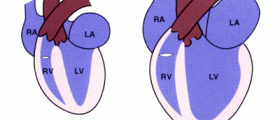
Frontal lobe epilepsy is a type of epilepsy that develops due to abnormal electrical activity in the frontal lobe of the brain. Seizures are in this case simple partial or complex partial and frequently with secondary generalization.
Symptoms and signs of this type of epilepsy are a mixture of behavioral and motor or even tonic (postural) changes. Frontal lobe epilepsy is more associated to status epilepticus than epilepsy which originates from other parts of the brain.
What are Causes of Frontal Epilepsy?
Approximately one third of all patients with frontal epilepsy are actually suffering from a brain tumor. In majority of cases these tumors are gangliogliomas or low-grade gliomas. Epidermoid tumors may occur as well.
Furthermore, frontal epilepsy may develop as a consequence of head trauma. The first attack may occur a few months after the injury although it may also take years for the condition to develop.
It is also possible to develop frontal lobe epilepsy due to arteriovenous malformations, cavernous angioma and venous angioma, all of which are different vascular abnormalities.
Sometimes frontal lobe epilepsy occurs to some developmental lesions like hamartomas and nodular heterotopias.
Encephalitis is inflammation of the brain that commonly leads to temporal lobe epilepsy. However, in rare occasions the condition can be also blamed for the onset of frontal epilepsy as well.
Finally, this type of epilepsy may be inherited. ADNFLE (autosomal dominant nocturnal frontal lobe epilepsy) is the condition characterized by epileptic attacks that typically occur at night. There are three types of ADNFLE.
Diagnosing Frontal Lobe Epilepsy
Doctors take patient's history and pay close attention to all the characteristics of seizure episodes. It is also important to interview all the witnesses of the epileptic attack who will provide with additional information regarding the very attack. The time of the attack, the pattern, precipitating factors and response to medications are all supposed to be described in details.
It is easy for a well experienced doctor to determine the actual location of the abnormal electrical activity according to the fact that frontal lobe epilepsy most frequently occurs during sleep, is of brief duration, has rapid secondary generalization and distinctive motor manifestations.
However, definitive conformation of the condition as well as the underlying cause of epileptic attacks can be achieved only after thorough neurological examination and several more tests and exams such as CT scan or MRI of the head as well as electroencephalography. While CT scan and MRI provide with suitable insight regarding the lesion responsible for the attacks, electroencephalography detects the location of abnormal electrical activity.

















Your thoughts on this
Loading...